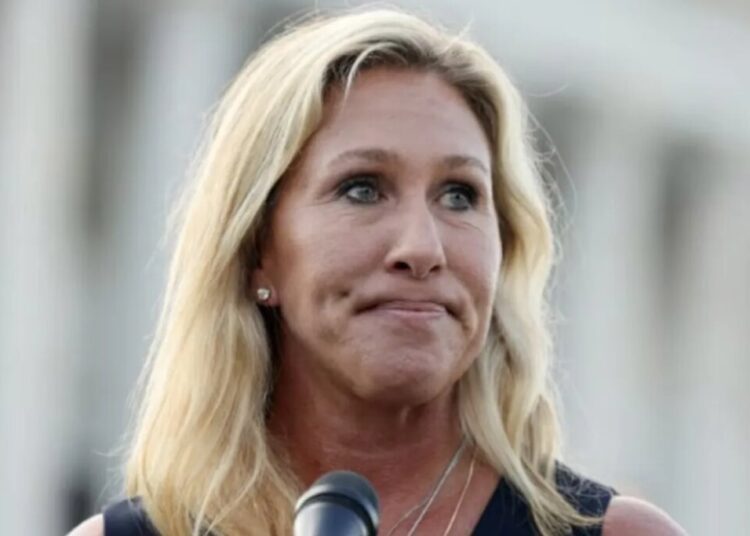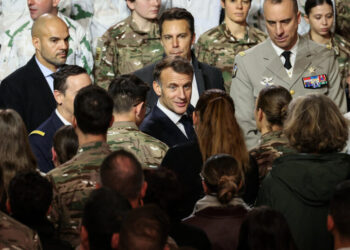PALM BEACH, Fla. — During President Donald Trump’s contentious Oval Office meeting last month with Ukrainian President Volodymyr Zelensky, he told his top aides to push for a deal that would successfully halt Russia’s nearly four-year war in Ukraine, spurred by his fresh success at brokering a ceasefire between Israel and Hamas.
The result has been weeks of urgent — and at times disconnected — negotiations conducted by Trump’s top foreign policy leaders. The administration has, at times, relied on unconventional messengers, with some U.S. officials rejecting Russian demands only to have others accept them. Through it all, Trump has declared that his flexible style can win a deal where others have failed.
Now, senior White House officials say they are nearing a peace settlement. “We’re the closest we’ve ever been to ending the war,” a senior White House official said, speaking like others on the condition of anonymity to talk freely about internal discussions. “The optimism is pretty high.”
Some European officials who are sympathetic to Ukraine agree that a deal has become more likely, saying that with Kyiv pressed on the battlefield and Zelensky facing a growing corruption scandal, his willingness to make at least some of the concessions that Russia is demanding may be growing.
But while Ukraine might be inching toward accepting a deal, skeptics warn that it still could fall apart if neither side can find an offer tolerable to the other. Russian leaders on Wednesday declared their confidence that they were in a winning position, saying that even the 28-point peace plan that stunned Ukrainian leaders last week may not be enough to quell their appetite for concessions.
“It’s premature to say” that Russia is closer than ever to peace, Kremlin spokesman Dmitry Peskov told reporters on Wednesday. “Let’s wait for now.”
A top Russian diplomat said that his country was unwilling to back down.
“There can be no talk of concessions or giving up our positions on the key issues we face,” Russian Deputy Foreign Minister Sergei Ryabkov said Wednesday.
The Russian pressure leaves chances of breakthroughs uncertain, officials said, as Trump’s special envoy, Steve Witkoff, prepares to fly to Moscow next week, while Army Secretary Daniel Driscoll continues to discuss issues with the Ukrainians.
Over recent weeks, the top officials working on the deal — Secretary of State Marco Rubio, Vice President JD Vance, Trump son-in-law Jared Kushner, Witkoff and Driscoll — have been on frequent group chats and conference calls to coordinate their efforts as they speak to both Russians and Ukrainians, said three senior administration officials.
The conversations largely have excluded Trump’s official Ukraine envoy, Keith Kellogg, whom the Russians have sought to sideline because they view him as too pro-Ukrainian, officials said. And a swath of other officials on the National Security Council and at the State Department also have been kept away from the talks.
But despite administration claims of close coordination at the top, at times the process has appeared disorderly. Trump and Russian President Vladimir Putin were planning to meet in Budapest in late October, but their summit was ultimately scrapped after Rubio raised objections to a list of Russian demands as crossing too many Ukrainian red lines, one U.S. official said.
“The Russians sent a paper to Rubio, and he rejected it and the summit was canceled,” the official said.
But many of the same ideas made their way back into the 28-point proposal that was leaked last week to Axios and that Driscoll presented in Kyiv last week, the official said, along with the warning that Ukraine needed to accept it by Thanksgiving or face a halt in U.S. assistance.
Days later, Rubio spoke by phone to Republican and Democratic members of Congress who were at a security conference in Canada. Some from both parties walked away believing that Rubio told them the 28-point plan was primarily Russian in origin. The State Department later said that Rubio had actually said that the plan incorporated ideas from both Russia and Ukraine.
Some of the toughest demands on Kyiv in the 28-point proposal — such as an ironclad commitment to hand additional territory to Russia and abandon its efforts to join NATO — have been scrapped in additional talks between U.S. and Ukrainian officials in recent days. That has eased some of the pressure on Kyiv, though Russian officials have suggested they will not go along with it.
The proposal “was always meant to be like a working and living, breathing document,” the senior White House official said. “It wasn’t supposed to be like, here is a plan, you know, accept or decline.”
The official said it was part of Trump’s style of negotiation.
“When they come up with a game plan, they go off individually, because each person has individual relationships that are maybe better than another person has. They get a feel for what’s possible,” the official said.
The improvisatory technique has led to sudden personnel swaps, including the elevation of Driscoll, a senior military leader and Yale Law classmate of Vance who has not previously engaged deeply on Ukraine negotiations. He was in Kyiv last week on a preplanned trip to discuss drone technology but was handed the task of briefing Ukrainian leaders on the 28-point plan, two senior administration officials said.
After hitting it off with the Ukrainians, he is retaining his role as an interlocutor with them even though it is outside the remit of his ordinary duties. Driscoll met Wednesday with Vance at Fort Campbell, an Army base on the Tennessee-Kentucky border, the vice president’s office said, after meeting with Russians and Ukrainians in Abu Dhabi this week.
Much remains unsettled. One element of the plan is some form of security guarantees for Ukraine. Russians have rejected any foreign troops on Ukrainian soil, and Trump said Tuesday that the Europeans would bear the brunt of the promises of support.
Many European officials say they are still in the dark about what Trump has in mind. They are hearing the Americans will work with them on security guarantees, but so far “it’s up in the air what that means on the ground,” said one NATO diplomat who is familiar with the discussions between Washington and its European partners.
But in what might be a warning sign about the prospect of progress, U.S. and European officials appear to be split about Ukraine’s and Russia’s relative strengths. Many Europeans think that Russia will collapse with more time and continued weapons support for Ukraine, a senior administration official said.
“I don’t think there’s any indication of that,” the official said, articulating the U.S. position.
On the contested territory in eastern Ukraine that Russia is asking as the price of a peace deal, “the Ukrainians are understandably reluctant to give it up. The Russians think that they’re going to be able to get it one way or the other,” the official said.
Allison reported from Washington. Catherine Belton in London, Adam Taylor in Washington, Ellen Francis in Brussels and Robyn Dixon in Riga, Latvia, contributed to this report.
The post Trump’s flexible diplomacy drives new Ukraine peace push — and fresh turmoil appeared first on Washington Post.




